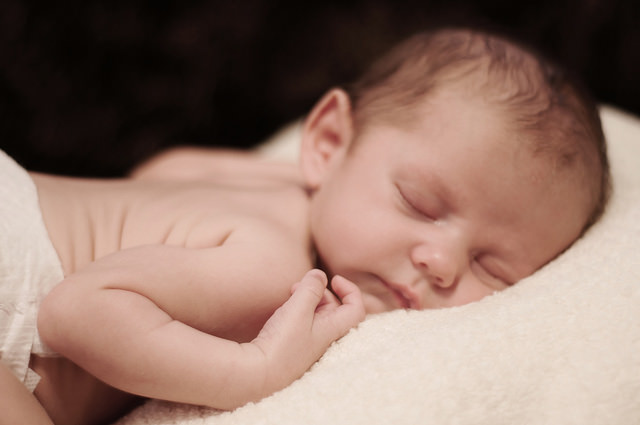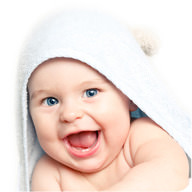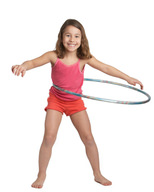13.67: Birth to Adulthood
- Page ID
- 13537
\( \newcommand{\vecs}[1]{\overset { \scriptstyle \rightharpoonup} {\mathbf{#1}} } \)
\( \newcommand{\vecd}[1]{\overset{-\!-\!\rightharpoonup}{\vphantom{a}\smash {#1}}} \)
\( \newcommand{\dsum}{\displaystyle\sum\limits} \)
\( \newcommand{\dint}{\displaystyle\int\limits} \)
\( \newcommand{\dlim}{\displaystyle\lim\limits} \)
\( \newcommand{\id}{\mathrm{id}}\) \( \newcommand{\Span}{\mathrm{span}}\)
( \newcommand{\kernel}{\mathrm{null}\,}\) \( \newcommand{\range}{\mathrm{range}\,}\)
\( \newcommand{\RealPart}{\mathrm{Re}}\) \( \newcommand{\ImaginaryPart}{\mathrm{Im}}\)
\( \newcommand{\Argument}{\mathrm{Arg}}\) \( \newcommand{\norm}[1]{\| #1 \|}\)
\( \newcommand{\inner}[2]{\langle #1, #2 \rangle}\)
\( \newcommand{\Span}{\mathrm{span}}\)
\( \newcommand{\id}{\mathrm{id}}\)
\( \newcommand{\Span}{\mathrm{span}}\)
\( \newcommand{\kernel}{\mathrm{null}\,}\)
\( \newcommand{\range}{\mathrm{range}\,}\)
\( \newcommand{\RealPart}{\mathrm{Re}}\)
\( \newcommand{\ImaginaryPart}{\mathrm{Im}}\)
\( \newcommand{\Argument}{\mathrm{Arg}}\)
\( \newcommand{\norm}[1]{\| #1 \|}\)
\( \newcommand{\inner}[2]{\langle #1, #2 \rangle}\)
\( \newcommand{\Span}{\mathrm{span}}\) \( \newcommand{\AA}{\unicode[.8,0]{x212B}}\)
\( \newcommand{\vectorA}[1]{\vec{#1}} % arrow\)
\( \newcommand{\vectorAt}[1]{\vec{\text{#1}}} % arrow\)
\( \newcommand{\vectorB}[1]{\overset { \scriptstyle \rightharpoonup} {\mathbf{#1}} } \)
\( \newcommand{\vectorC}[1]{\textbf{#1}} \)
\( \newcommand{\vectorD}[1]{\overrightarrow{#1}} \)
\( \newcommand{\vectorDt}[1]{\overrightarrow{\text{#1}}} \)
\( \newcommand{\vectE}[1]{\overset{-\!-\!\rightharpoonup}{\vphantom{a}\smash{\mathbf {#1}}}} \)
\( \newcommand{\vecs}[1]{\overset { \scriptstyle \rightharpoonup} {\mathbf{#1}} } \)
\(\newcommand{\longvect}{\overrightarrow}\)
\( \newcommand{\vecd}[1]{\overset{-\!-\!\rightharpoonup}{\vphantom{a}\smash {#1}}} \)
\(\newcommand{\avec}{\mathbf a}\) \(\newcommand{\bvec}{\mathbf b}\) \(\newcommand{\cvec}{\mathbf c}\) \(\newcommand{\dvec}{\mathbf d}\) \(\newcommand{\dtil}{\widetilde{\mathbf d}}\) \(\newcommand{\evec}{\mathbf e}\) \(\newcommand{\fvec}{\mathbf f}\) \(\newcommand{\nvec}{\mathbf n}\) \(\newcommand{\pvec}{\mathbf p}\) \(\newcommand{\qvec}{\mathbf q}\) \(\newcommand{\svec}{\mathbf s}\) \(\newcommand{\tvec}{\mathbf t}\) \(\newcommand{\uvec}{\mathbf u}\) \(\newcommand{\vvec}{\mathbf v}\) \(\newcommand{\wvec}{\mathbf w}\) \(\newcommand{\xvec}{\mathbf x}\) \(\newcommand{\yvec}{\mathbf y}\) \(\newcommand{\zvec}{\mathbf z}\) \(\newcommand{\rvec}{\mathbf r}\) \(\newcommand{\mvec}{\mathbf m}\) \(\newcommand{\zerovec}{\mathbf 0}\) \(\newcommand{\onevec}{\mathbf 1}\) \(\newcommand{\real}{\mathbb R}\) \(\newcommand{\twovec}[2]{\left[\begin{array}{r}#1 \\ #2 \end{array}\right]}\) \(\newcommand{\ctwovec}[2]{\left[\begin{array}{c}#1 \\ #2 \end{array}\right]}\) \(\newcommand{\threevec}[3]{\left[\begin{array}{r}#1 \\ #2 \\ #3 \end{array}\right]}\) \(\newcommand{\cthreevec}[3]{\left[\begin{array}{c}#1 \\ #2 \\ #3 \end{array}\right]}\) \(\newcommand{\fourvec}[4]{\left[\begin{array}{r}#1 \\ #2 \\ #3 \\ #4 \end{array}\right]}\) \(\newcommand{\cfourvec}[4]{\left[\begin{array}{c}#1 \\ #2 \\ #3 \\ #4 \end{array}\right]}\) \(\newcommand{\fivevec}[5]{\left[\begin{array}{r}#1 \\ #2 \\ #3 \\ #4 \\ #5 \\ \end{array}\right]}\) \(\newcommand{\cfivevec}[5]{\left[\begin{array}{c}#1 \\ #2 \\ #3 \\ #4 \\ #5 \\ \end{array}\right]}\) \(\newcommand{\mattwo}[4]{\left[\begin{array}{rr}#1 \amp #2 \\ #3 \amp #4 \\ \end{array}\right]}\) \(\newcommand{\laspan}[1]{\text{Span}\{#1\}}\) \(\newcommand{\bcal}{\cal B}\) \(\newcommand{\ccal}{\cal C}\) \(\newcommand{\scal}{\cal S}\) \(\newcommand{\wcal}{\cal W}\) \(\newcommand{\ecal}{\cal E}\) \(\newcommand{\coords}[2]{\left\{#1\right\}_{#2}}\) \(\newcommand{\gray}[1]{\color{gray}{#1}}\) \(\newcommand{\lgray}[1]{\color{lightgray}{#1}}\) \(\newcommand{\rank}{\operatorname{rank}}\) \(\newcommand{\row}{\text{Row}}\) \(\newcommand{\col}{\text{Col}}\) \(\renewcommand{\row}{\text{Row}}\) \(\newcommand{\nul}{\text{Nul}}\) \(\newcommand{\var}{\text{Var}}\) \(\newcommand{\corr}{\text{corr}}\) \(\newcommand{\len}[1]{\left|#1\right|}\) \(\newcommand{\bbar}{\overline{\bvec}}\) \(\newcommand{\bhat}{\widehat{\bvec}}\) \(\newcommand{\bperp}{\bvec^\perp}\) \(\newcommand{\xhat}{\widehat{\xvec}}\) \(\newcommand{\vhat}{\widehat{\vvec}}\) \(\newcommand{\uhat}{\widehat{\uvec}}\) \(\newcommand{\what}{\widehat{\wvec}}\) \(\newcommand{\Sighat}{\widehat{\Sigma}}\) \(\newcommand{\lt}{<}\) \(\newcommand{\gt}{>}\) \(\newcommand{\amp}{&}\) \(\definecolor{fillinmathshade}{gray}{0.9}\)
What's the main difference between an adorable little baby and a teenager?
This quiet little baby will soon grow into someone who talks and expresses feelings and attitudes. What's the main difference between an adorable little baby and a teenager? Plenty.
From Birth to Adulthood
For the first year after birth, a baby is called an infant. Childhood begins at age two and continues until adolescence. Adolescence is the last stage of life before adulthood.
Infancy
Infancy is the first year of life after birth. Infants are born with a surprising range of abilities. For example, they have well-developed senses of touch, hearing, and smell. They can also communicate their needs by crying. During their first year, they develop many other abilities, including those described below.
By 6 weeks after birth, infants typically start smiling (see Figure below) and making vocal sounds. By 6 months, infants are babbling. They have also learned to sit and are starting to crawl. The deciduous teeth (baby teeth) have started to come in. By 12 months, infants may be saying their first words. They usually can stand with help and may even have started to walk.
 A baby’s first smile is an early milestone in infant development.
A baby’s first smile is an early milestone in infant development.Infancy is the period of most rapid growth after birth. Growth is even faster during infancy than it is during puberty. By the end of the first year, the average baby is twice as long as it was at birth and three times as heavy.
Childhood
A toddler is a child aged 1 to 3 years. Children of this age are learning to walk, or “toddle.” Growth is still relatively rapid during the toddler years but it has begun to slow down. During the next three years, children achieve many more milestones.
- By age 4, most children can run, climb stairs, and scribble with a crayon. They know many words and use simple sentences. The majority are also toilet trained.
- By age five, children are able to carry on conversations, recognize letters and words, and use a pencil to trace letters. They can usually tie their own shoelaces and may be learning to ride a bicycle, swing a bat, kick a ball and play other games (Figure below).
- By age 6, most children begin losing their deciduous teeth, and their permanent teeth start coming in. They speak fluently and are learning to read and write. They spend more time with peers and develop friendships.
 Five year olds can usually play various games.
Five year olds can usually play various games.Older children continue to grow slowly until they start the adolescent growth spurt during puberty. They also continue to develop mentally, emotionally, and socially. Think about all the ways you have changed since you were as young as the child in Figure above. What milestones of development did you achieve during these childhood years?
Puberty
Puberty is the stage of life when a child becomes sexually mature. Puberty begins when the pituitary gland tells the testes to secrete testosterone in boys, and in girls the pituitary gland signals the ovaries to secrete estrogen. Changes that occur during puberty are discussed in the Male Reproductive Development and Female Reproductive Development concepts.
Adolescence
Adolescence is the period of transition between the beginning of puberty and adulthood. Adolescence is also a time of significant mental, emotional, and social changes. For example:
- Adolescents generally develop the ability to think abstractly.
- Adolescents may have mood swings because of surging hormones.
- Adolescents usually try to be more independent from their parents.
- Adolescents typically spend much of their time with peers.
- Adolescents may start to develop intimate relationships.
Science Friday: The Real Guide to Imaginary Companions
Children often have imaginary friends of various shapes and sizes. In this two-part video series by Science Friday, psychologists Marjorie Taylor and Tracy Gleason discuss why kids create these companions, and the roles that these companions play in development.
Summary
- Growth and development are most rapid during infancy and slower throughout the rest of childhood until adolescence.
- Adolescence involves mental, emotional, and social changes in addition to the physical changes of puberty.
Review
- Distinguish infancy from childhood.
- What is a toddler?
- List two abilities of an infant.
- Describe three changes associated with adolescence.
- Think about all the ways you have changed since you were a five year old child. List milestones of development you have achieved since then.
| Image | Reference | Attributions |
 |
[Figure 1] | License: CC BY-NC |
 |
[Figure 2] | Credit: Image copyright S.Borisov, 2014 Source: http://www.shutterstock.com License: Used under license from Shutterstock.com |
 |
[Figure 3] | Credit: Image copyright aastock, 2014 Source: http://www.shutterstock.com License: Used under license from Shutterstock.com |

